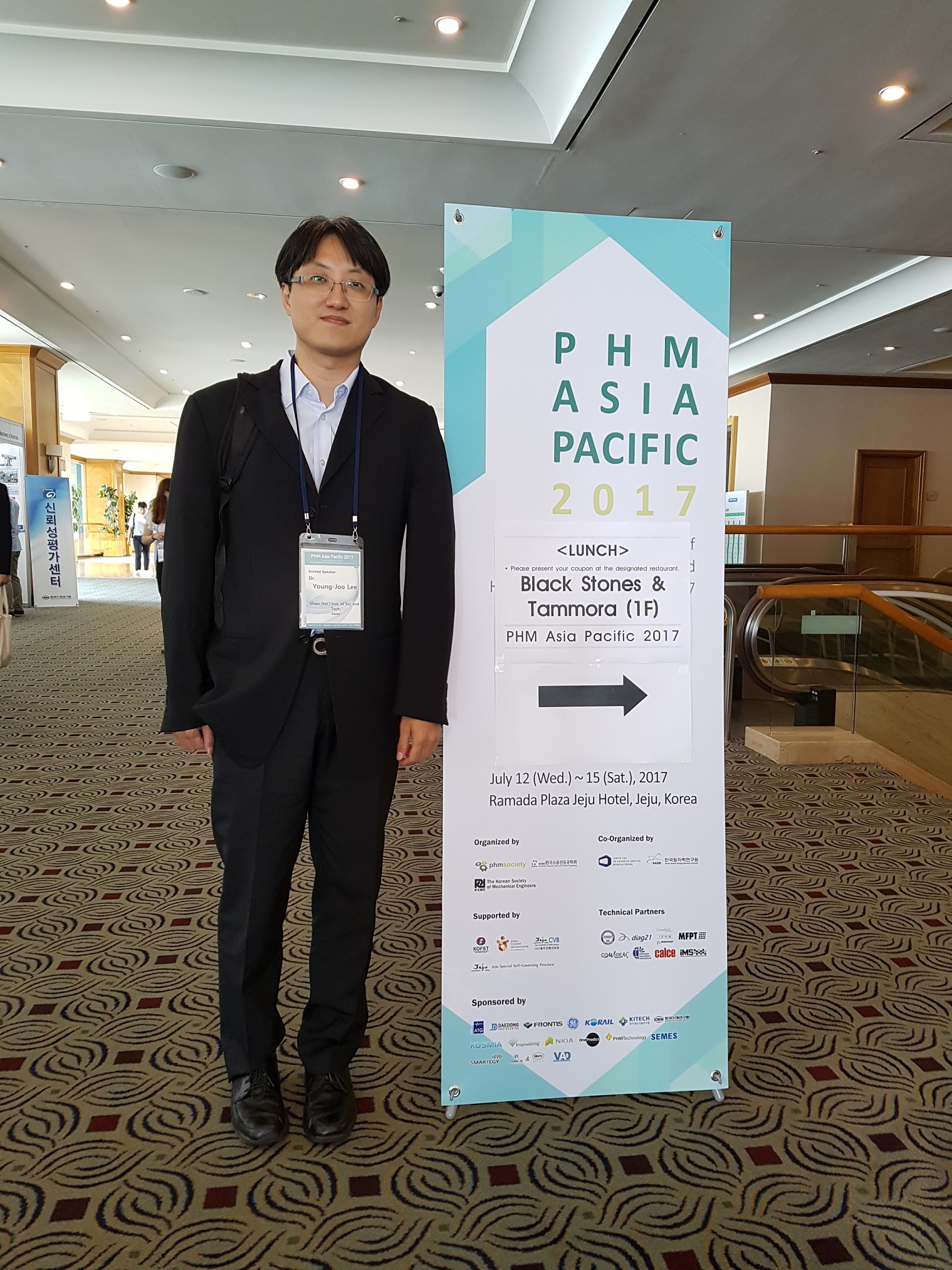Posted by ylee | News
Prof. Lee made a presentation as an invited speaker at PHM Asia Pacific 2017
(7/12~7/15 @ Ramada Plaza Jeju Hotel, Jeju, Korea), with a title of Probabilistic
Fatigue Life Prognosis for Steel Railway Bridges after Local Inspection and Repair.
(http://phmap.org/program/index.kin?gubun=1&sgubun=9)
The abstract is attached at the end, and Prof. Lee also served the conference
as a local committee member and an associate editor.
Abstract
Steel railway bridges are exposed to repeated train loads which often cause fatigue failure. Since railway bridges are critical nodes of a transportation network, they are designed and built to survive for a certain period of time against fatigue, but they may fail earlier than expected. To guarantee the target fatigue life of a steel railway bridge, bridge maintenance such as local inspection and repair should be properly provided, but it is a challenging task because there are various sources of uncertainty associated with aging bridges, train loads, environment, and maintenance work. For the optimal risk-based maintenance, it is thus essential to predict the probabilistic fatigue life of a steel railway bridge and to update the life prognosis information based on the results of local inspection and repair. Recently, a system reliability approach employing a series of limit-state function formulations was proposed to evaluate the fatigue failure risk of structural systems and to update the prior risk information of fatigue failure in various scenarios of inspection. However, the previously-proposed method can deal with a constant amplitude load only, and it cannot be applied to a railway bridge because it cannot take account of a cyclic load having varying amounts of amplitude which is the major loading pattern of train traffic. In addition, it is not feasible to update the prior risk information after repair of bridges. In this research, the system reliability approach is further developed so that it can handle a varying amplitude load and update the system-level risk of fatigue failure for railway bridges after inspection and repair. To demonstrate the proposed method, it is applied to a numerical example of a steel railway bridge, and the impacts of inspection and repair to the probabilistic fatigue life prognosis is discussed through parametric studies.

